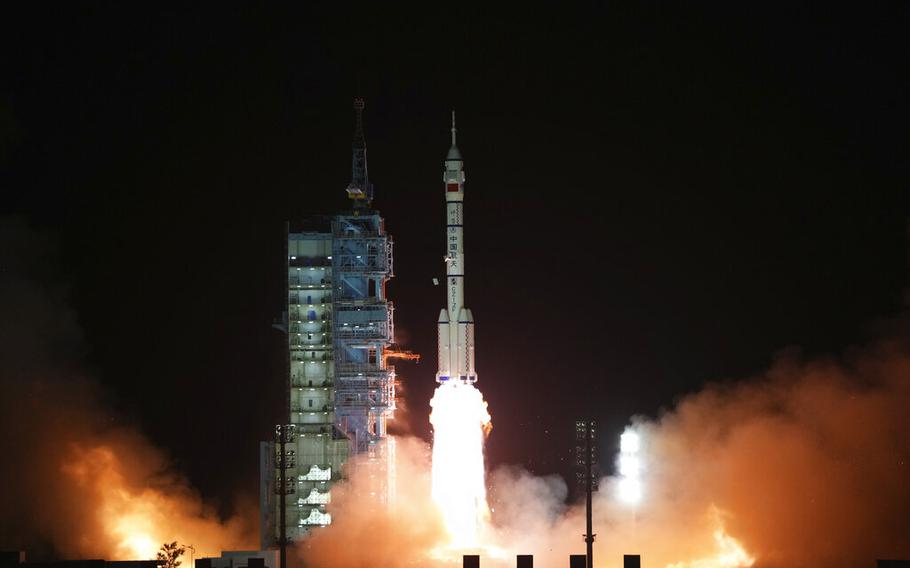
In this photo released by Xinhua News Agency, the manned spaceship Shenzhou-15, atop the Long March-2F Y15 carrier rocket, blasts off from the Jiuquan Satellite Launch Center in northwestern China on Tuesday, Nov. 29, 2022. (Li Gang/Xinhua via AP)
China unveiled plans for a major increase in the pace of its expected space missions this year, solidifying the country’s position as the world’s second-most active launcher behind only Elon Musk’s SpaceX.
A record 100 Chinese missions should occur in 2024, state media reported, up more than 40% from last year.
Musk’s company had 98 launches in 2023, according to SpaceX.
China’s government is increasing its commitment to space exploration as Beijing competes with the U.S. in a new race to the moon, with both countries trying to send people there for the first time since NASA’s final Apollo mission in 1972.
State-run China Aerospace Science and Technology Corp., the country’s premier space contractor, will conduct almost 70 missions and send more than 290 satellites and spacecraft into orbit, according to broadcaster CCTV, which cited a report prepared by the company and released on Monday.
Those missions will include the first flight of the Long March-12 rocket, two crewed missions to the Chinese space station and the launch of an astronomical satellite jointly developed by China and France, according to the report.
In the first half of 2024, China will also launch the Chang’e-6 probe to travel to the South Pole-Aitken Basin, a huge crater on the far side of the moon, and then return to Earth with samples. China in 2019 became the only country to land on the moon’s far side.
In addition to its own launches, CASC anticipates more missions from other firms, as startups play a larger role in the country’s space activity.
They include companies such as LandSpace Technology Corp., which sent the world’s first methane-fueled rocket into orbit last year, and Beijing-based Orienspace, which conducted its first orbital launch last month and hopes to introduce a reusable rocket as early as next year.
To help promote private-sector companies, the government is working on a new launch complex in Hainan designed for commercial missions. The center, under construction since 2022, is scheduled to be able to be operational by the end of June, according to media reports.
China wants to have its first crewed lunar mission before 2030, and the space agency over the weekend unveiled the names of the spaceship and moon lander.
The U.S.-led Artemis program is aiming for 2026, NASA announced last month.
©2024 Bloomberg L.P.